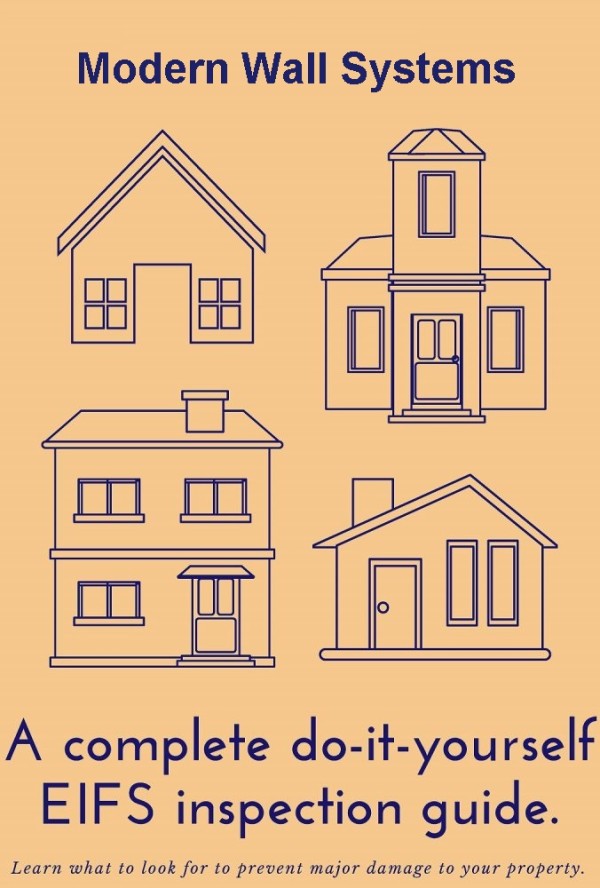From time to time I am asked “Which is better, EIFS or stucco?” In my opinion, conventional stucco systems are obsolete in that one can achieve all the benefits of conventional sand and cement stucco with modern EIFS, and then some. That said, if applied correctly both systems will last for decades if properly maintained but you have to remember that traditional stucco cracks more often than EIFS because of the weight.
Stucco is a durable material that can enhance curb appeal and protect your property from the elements by forming a solid shield around the structure. (when properly installed) Traditional/hard-coat stucco can be less expensive than synthetic stucco systems, (EIFS ) so it’s easy to understand its popularity.
Which one is best for your property?
Though both systems sound similar at first, EIFS and traditional stucco have differences that change how the stucco functions. Let’s have a look at the differences between stucco and EIFS.
WHAT IS TRADITIONAL STUCCO?
Generally, when someone is talking about regular stucco, they are referring to the traditional style that is a natural mix of Portland cement, limestone powder, sand, and water. Stucco is applied to a building using a 3-coat system over a metal lath base. From there, it is spread with the trowel over the ceiling, walls, and other surfaces where the stucco is being applied. Textured finishes and colors can be added to enhance the overall look and feel.
BENEFITS OF TRADITIONAL STUCCO
Traditional stucco has been a long-standing favorite in architecture for good reason: It’s a beautiful siding to work with. It’s also highly affordable for both homeowners and contractors.
Stucco cures quickly, is easy to repair, and any remediation that is eventually required is not much of a hassle. You can’t add as many decorative elements to stucco.
CONS OF STUCCO
- Stucco is heavy, weighing about 10 pounds per square foot.
- When damaged, traditional stucco requires remediation of an entire wall.
- Stucco is prone to cracking over time, as well as water damage. If water gets into a traditional stucco system, there can be cracking, peeling, chipping, and even structural damage throughout the whole wall.
- Stucco is susceptible to buckling in extreme weather. It can become very high maintenance in places with quickly changing seasons and varying weather patterns.
WHAT IS EIFS?
Unlike traditional stucco that utilizes natural ingredients and mesh, External Insulation and Finishing Systems (EIFS) stucco uses layers that add in synthetic materials. The first layer is comprised of a polystyrene foam board. Then, that is followed by a fiberglass mesh and a finishing coat. Some systems add in water-resistant barriers or other layers. When such layers are applied, EIFS provides more protection and insulation than traditional stucco.
BENEFITS OF EIFS FOR YOUR HOUSE
The leading reason EIFS has gained popularity is the increased insulation. EIFS is more flexible than traditional stucco as well, so there is less cracking and crumbling as a result of shifting foundations or thermal expansion. The fiberglass layer provides more impact and crack resistance.
EIFS is lighter than traditional stucco by approximately 80% than hard-coat, and has a higher R-value, coming in between 4 and 5.6, which is notably higher than the 0.20 R-value of regular stucco. (R-value determined by the size of EPS, 1,2,3”, etc)
CONS OF EIFS STUCCO
- The installation process for EIFS stucco is much more complicated and time-consuming than traditional stucco. The multiple layers also need to be installed by an expert, since the risk of error runs high.
- EIFS is more costly than traditional stucco.
- You need to hire a professional contractor to install EIFS.
- Without a trustworthy and experienced contractor on the team, EIFS is easy to mess up, and that can result in a lack of water resistance and long-term damages down the road.
WHAT IS THE BEST FOR YOUR HOME?
When you consider the differences in cost, installation, and maintenance, you might end up asking questions such as, “How do I decide what’s best for my home?”
The answer depends on the very factors that separate traditional and synthetic stucco. A general rule of thumb is this:
Consider your budget, whether you would like a stylized wall or color, and your climate. If you live somewhere that receives a lot of inclement weather and precipitation, you might want a properly installed EIFS house. If you live somewhere with more constant temperatures and drier air, than traditional stucco might be best for you.
There is no denying that EIFS is a versatile and durable system, despite the higher price tag.
Now that you know the differences between EIFS and stucco, what else would you like to know? If you are looking for more information about these systems or have questions that were left unanswered, don’t hesitate to get in contact with us. Fill out the contact form to get more information delivered right to your inbox! We’re happy to share our years of knowledge and experience with you.
Contact us today.
Modern Wall Systems
900 Commonwealth PL, Ste 228
Virginia Beach, VA 23464
757-639-4136
www.eifswallsystems.com
Need more help with this?
Don’t hesitate to contact us here.



